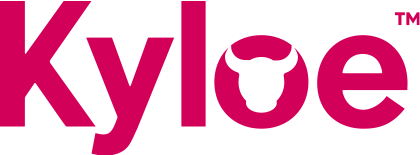Reading time: 3 minutes
So you’ve finally made the decision to switch ATS – what happens next? Simple answer, right? You switch it on and start to see the benefits of all of these shiny new features in the form of increased productivity and extra revenue.
Yet changing your ATS alone won’t remove the bad habits your recruiters have and the inefficiencies that have developed within your business. You might be coming from an outdated and clunky system where recruiters have been forced to develop annoying workarounds. Alternatively, you might be coming from a world of spreadsheets, shared docs and notepads, where the very act of inputting data into an ATS requires a change in mindset.
Therefore it’s important to get the first bit right – you need to get your ATS in place in a way that doesn’t affect business productivity but also ensures that it provides an incentive for recruiters to start using it from day one. You have a very short time to sell the new software and processes to your team, or you’ll quickly find yourself back to square one.
Take your implementation seriously
Once you’ve selected your provider, generated interest internally and signed the paperwork it can be frustrating to hear that there can be a 3-month implementation process sitting between you and your software. But make sure to question the value of shortening this and the impact it can have on initial user adoption. If you’re migrating data, have you taken the time to assess what data would be valuable to bring across? Have you devoted enough time to properly map your data to the new system and test the results? Are you absolutely confident that the system covers everything you need it to do ‘out of the box’ or is there value in making a few key customisations before you release it to your team? Are you prepared for training, or is it worth planning a course or writing some documentation ahead of time?
Most importantly are you confident that there are resources available on both the side of the supplier and your own business to ensure this project is completed successfully? One of the most important things you can do to ensure this is the case is to have a designated Project Manager within your business. This might be something they can share with other responsibilities initially but expect it to be closer to a full-time job when you get nearer to go-live.
Get people involved to generate excitement – but manage requirements centrally
One of the most important things that you need to do early on is sell your new system, and your new processes to the recruiters. If you’re able to do this successfully then recruiters will see the benefits of your new purchase early and user adoption will be seamless.
Therefore, it’s important to involve your key recruiters/ team leaders in the project as much as possible. Ensure those that will be using the system the most are involved in the key decisions related to data mapping, system customisation and new processes definition. However, be wary of the dangers of building a system based on exceptional circumstances, individual preferences and current habits. Make sure to constantly evaluate the requirements of your team against the recommendations of the vendor, any project consultants and your own internal experts. And keep an eye out for any situation where you’re customising the system to replicate an inefficient process that exists in your current system. Remember, it’s time for change!
Keep it simple!
Here’s a tip – if you’ve spent 3 days scoping and solutioning one specific customisation, there’s little chance your recruiters will take the same time to understand how to use it. Similarly, it’s tempting to ensure data quality by filling the new system with validations and mandatory fields, but this can be counter-productive if the recruiter feels the ATS is slowing them down. The easiest way to ensure that recruiters use the system is to make it as simple as possible for them to do so.
One way of doing this is to consider a phased approach to your implementation. You might have the appetite for a heavily customised system with several key integrations, but too much change in one go can be overwhelming for recruiters and will cause them to go back to their spreadsheets. Better to get the core system in place first, make sure the recruiters are comfortable with that level of change and then begin to release the fancy add-ons, customisations and integrations.
And finally, Train!
You can buy the most feature-rich system on the market and spend thousands to ensure it matches your requirements, but unless you take the training of recruiters seriously, they are likely to resist change and move back to familiarity.
Make sure that your recruiters get face-to-face interactive time with software trainers. Make the teaching group-based and small, with recruiters able to follow on laptops and ask questions rather than sitting silently ignoring a scripted seminar.
Consider the value of working with your consultancy or vendor to build some training materials and a bespoke training plan. Also get your project team/subject matter experts to have more intense sessions so that they’ll be able to provide in-house support or train new users themselves.
Author: Leigh Clarke













